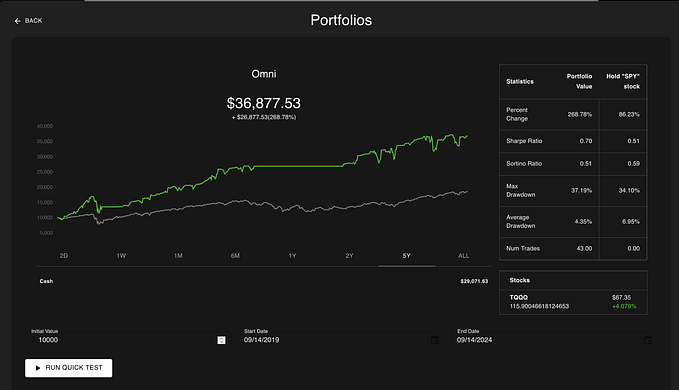Introducing Data Timestamp: world’s fastest, enterprise-grade, notarization dApp, landing on Zilliqa Platform.
It has been rumored since quite a Long time… and now, we’re finally ready to disclose and discover together all the details about something that’ll be among the most disruptive decentralized applications for digital data notarization. The Data Timestamp. A fully fledged solution that enables to validate & verify any digital file, ensuring chronological Proof of Existence (PoE) without having to rely on a centralized authority, this is a rather known concept that’s already been unfolded by legacy timestamp apps throughout the years, I know the question that may arise… Is the the Data Timestamp just another timestamp application? Like the many others already available? Of course not, let’s discover why.
Time is universally autonomous

Since the beginning of times, in the grand scheme of things, tracking and keeping a chronological record has been at the center of humanity, to the point that now is impossible to think life in a way that doesn’t include the tracking of time…. to the point that our entire discussion… could be based on this concept, but this is not our intention. Tracking time includes among many variables, one that’s very important, the most important perhaps, which is ensuring that the chronological record is immutable and trustworthy. The measuring of time utilizes something that is not centrally coordinated. UTC utilizes the universe as point of reference (Coordinated Universal Time). Making so that time’s truly decentralized and not controlled by anyone.
What’s a blockchain based timestamp? Why it’s so important? Does it make a disruptive difference?

We could’ve used the a complicated timestamp scheme, (that nerds like us can check above) but us starting with the concept of “univeral time” wasn’t left to the case, as it’s a preparatory concept to why blockchain timestamps bring an enormous difference in how we trust data as a society. We said that UTC time is based on an entity that (even if it may sound as a paradox) shares a similar feature with the blockchain consensus (assuming that the latter is public and decentralized) both cannot be controlled by humans, one “universally” and one “cryptographically”. Imagine that every time you have to know what time is it, you’d have to trust someone that tells you what time it is. Crazy right? Well, the world is crazy then, because this is currently happening on a daily basis in all those situations where data is handled. In those cases, the chronological variable is provided by an authority that’s centralized, an authority that you must trust (e.g for a health certificate you’ve to trust the hospital).

With blockchains, as every block is created (cryptographically) at a specific time via decentralized consensus, you don’t have to trust anyone in order to know the date in which that document was submitted to the blockchain and most of all nobody can tamper with the data after its submission on the chain.
This is the main reason why blockchain based timestamps bring a disruptive impact in the matter of certifying the chronological existence of a specific piece of data in a specific time-frame, which is called PoE (Proof of Existence).
Ok, I get that blockchain timestamps will disrupt the data industry. But, how Data Timestamp differs from timestamps that are currently available?

Now, that’s an interesting question! Let’s start by explaining the current state of the art of timestamp technology in terms of features and performances.
First, you have to understand that Proof of Work (PoW) is uniquely ideal for timestamps. PoW is a time-tested way to ensure the passing of time. Each new block in PoW makes all older blocks intrinsically safer, so your monitoring anchor gets stronger over time regardless of if new payments are made for new anchoring. Keep that in mind, because the most used blockchains for timestamp technology are Bitcoin and Ethereum which are both PoW based.

If you don’t want to read up all the technical stuff, think that “it just works”.
— — — — — — — START OF THE TECHNICAL PART
There are minor timestamp technologies based on other chains ( based in some cases on private or centralized blockchains, which are both useless if someone wants to rely on an environment that doesn’t rely on trust). We at Hybridverse believe in quality over everything, it’s our approach, reason why in this article we compare our technology with top-notch state of the art.
As you surely have understood from the title already, the Data Timestamp isn’t based on neither Bitcoin nor Ethereum but being built on Zilliqa!
Let’s start with evaluating Bitcoin’s , Ethereum’s and Zilliqa’s inner workings to understand the upper limits of what they can reliably provide a timestamp.
First, there is the question of transactions per second. This isn’t a meaningful comparison, because even though Ethereum can process ~4 times as many transactions per second (TPS) as Bitcoin, new blocks are tuned in both cases to be around 10 minutes for Bitcoin, and 2 minutes for Ethereum.
Zilliqa not only processes ~100 times as many TPS than Ethereum but also makes a new block more reliably to the tuned time of 30 seconds (and will probably come down even more according Zilliqa’s development).
Last but not least, there is an even deeper technical parameter that we’ll try to explain in simple terms: Bitcoin and Ethereum allow for forks, if you don’t know what that is, read this. Long story short, on Bitcoin you should probably wait a whole day to be sure that it’s not a fork, same goes for Ethereum.
Zilliqa doesn’t allow for forks, so you can immediately know that the timestamp anchor will be in the blockchain in an immutable way.
— — — — — — — END OF THE TECHNICAL PART

We’ve discovered together those technical aspects behind why Zilliqa’s blockchain (and its ecosystem) is our chosen partner for this disruptive venture, but there are some more information we want to share with you, we’re sure you’ll be satisfied with what’s coming, we’re about to introduce Chronos and Kairos, the Data Timestamp servers (to be precise, ASGI servers in order to get speeds better than Node.js or Go in Asyncio Python).
Chronos

Chronos hosts the Freemium server, it has basic functionalities such as data validation and verification, it’s thought for personal, non-business use only, like an artist who wants to copyright his piece of work, a programmer that wants to prove the existence of his code at a specific date and so on, such use cases can be easily fulfilled on Chronos server easily and free of charge.
Kairos

Kairos is the Premium server, where all the currently designed and future functionalities will be available to Premium and business users. The main of those is the Proof of Ownership, which allows the user to sign the timestamp enabling use cases such as data sharing (an entity may open a file only if the counterparty has signed it), audit trail and most of all, business provision of timestamp services, where a Law Firm can include their own public key (validator ID) in a curated list of validators on Hybridverse.com, allowing to provide an extra layer of trust that certifies not only that a file existed in a certain timeframe but also who validated it, improving this technology to unprecedented levels (as current timestamp technologies do not support proof of ownership but only proof of existence). Kairos supports other features such as the Augmented Tag, which is a PDF certificate of the validation that includes name, transaction id, logo of the signing party. Kairos features Premium support and Premium development as there are other cutting-edge features in the works for it but we keep it confidential for now, we want to make clear that, if opportunities are what your looking for and superior timestamp services are what you want to provide to your customers, Kairos is the right God to believe in.
Legally backed technology

The existence of a timestamp is for a fact undeniable, by every government in the democratic country (even where this technology matter isn’t regulated a case backed by a timestamp can be easily won in any court of Law) given the technological certainty of timestamps. In a blockchain industry where many segments aren’t regulated yet, the segment of timestamps is officially and legally backed by a European regulation that goes far back as 2014, as article 41 of the European Regulation n. 910 depicts: “the use of information technologies through the use of technologies registered on distributed registers produces the legal effects of the electronic time validation” . The regulation also implies that the provider of the technology (given that the technology is distributed, decentralized and trust-less) is an authorized entity that certifies those aspects that are certifiable with timestamps (proof of existence, proof of ownership) , with the difference that unlike centralized providers, the timestamp provider doesn’t need to be either approved or overseen by the any regulator given that the provider’s technology is distributed and given that no one has control over the consensus. This is a decisive key for unlocking the long term success of timestamp technology.
Learn more at https://eur-lex.europa.eu/legal-content/en/TXT/?uri=CELEX%3A32014R0910
A very actual use case: health certificates

Let’s use an actual and current use cases, at the time of writing this article we’re still in the COVID-19 pandemic crisis, so, let’s see how timestamps can be decisive for ensuring that an health certificate can be trusted.
Without Data Timestamp
A businessman is travelling for work, he’s COVID19 positive, he knows that his airline won’t let him travel because he needs an health certificate stating his negativity to the COVID19.
The man somehow manages to bribe the IT administrator which alters the certificate and postpones the issuing date, in order to look as it was issued today. As an airline has no other choice but to trust the hospital database, given that the database is compromised and reflects the corrupt information, the airline lets the passenger board the plan and infect other passengers.
(This is just one example and a best case scenario given that most airlines aren’t connected to hospitals databases which in most cases aren’t connected with each other, so the airline would potentially have to connect to multiple databases, and this is only one aspect of one of the least complicated data controversies that may arise as there are tons of ways to tamper with data)
With Data Timestamp
The hospital submits the certificate and validates it on the Zilliqa blockchain via the Data Timestamp interface, the airline verifies it on the same interface, which will output as result whether the certificate is valid or not, its validator ID and the time-frame in which it was validated, the airline is then able to take action based on the result of an independent verification
Other use cases without timestamp:

A leap to the future

In this article we’ve discussed about time starting with the concept of why it was important to use a standard for measuring it that’s not controlled by anyone, for the same reason is important to find a new standard on top of which building a new approach in how to share data between each other. Blockchain timestamps provide a viable way for doing that, without having to rely on third parties to trust and the Data Timestamp provides a more efficient framework on top of which this technology can be leveraged by the people.
Credits:
Data Timestamp is a venture of Hybridverse Labs Zilliqa Foundation, the Project is #ZilHIVE grant awardee.
Yours,
Hybridverse Labs,









